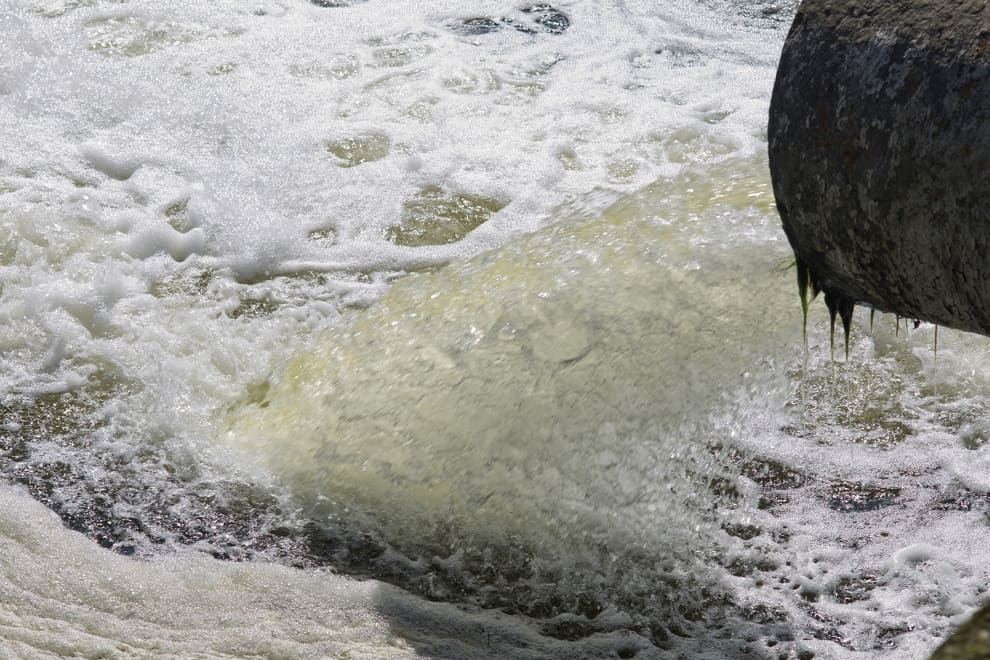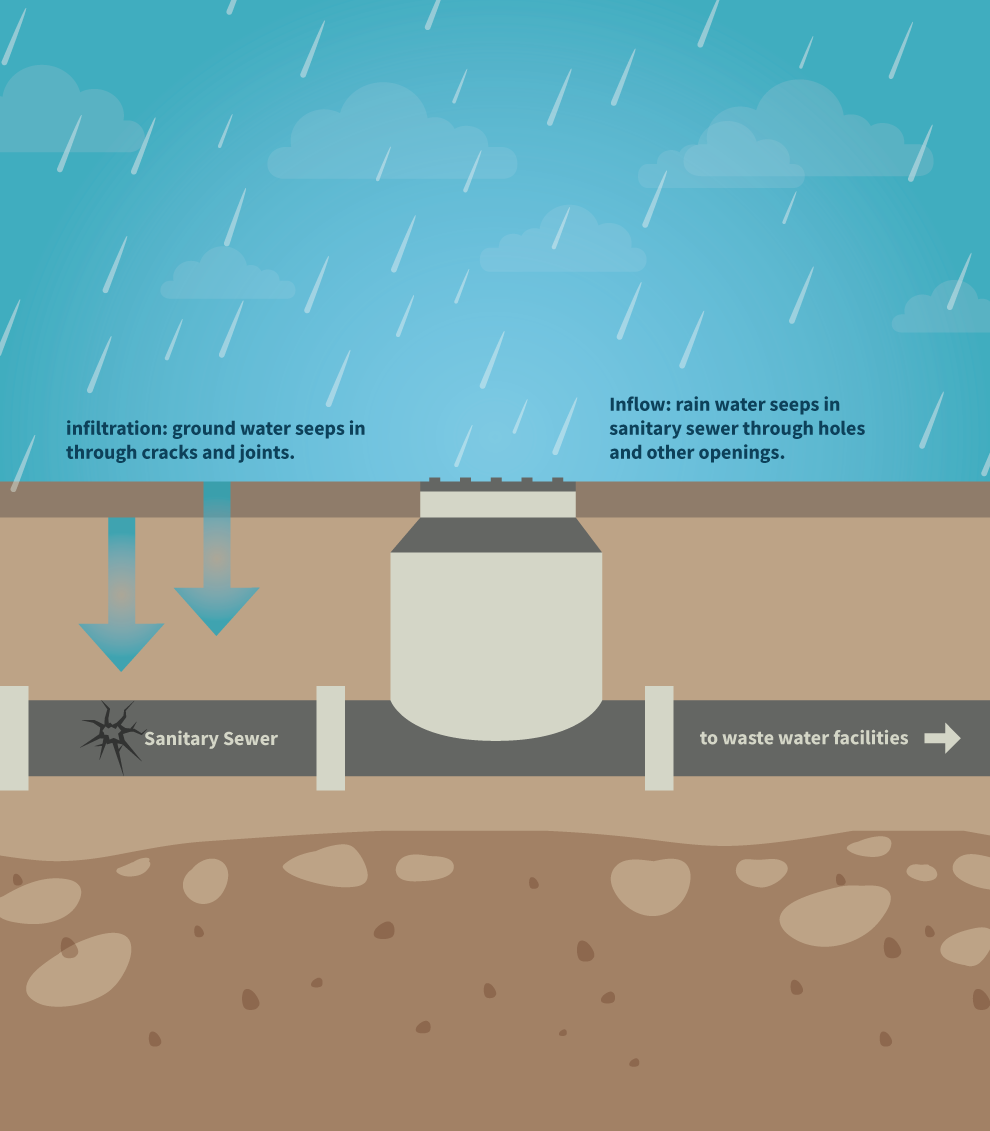Stormwater Management
Stormwater management is a high priority for municipal water distributors, particularly when they serve urban populations. It is a matter of public health and safety. Without proper stormwater management, excessive water runoff can contaminate local water sources with pollution, erosion, flooding, and other potentially hazardous environmental events.
To avoid the dangers of excessive stormwater runoff, water distributors must implement a comprehensive stormwater management plan that adheres to strict standards for the collection, monitoring, treatment, and distribution. Through upholding meticulous standards, municipalities can ensure that (1) surface and groundwater sources remain clean, and (2) properly treated water flows through every tap.
What is Stormwater?
As the name suggests, stormwater (aka storm water) includes any precipitation that falls from the sky. Rain, snowmelt, and hail are all forms of stormwater.
Generally speaking, there are two categories of stormwater. The first instance consists of water that falls directly onto a natural landscape — meaning the landscape hasn’t been developed by humans. This type of stormwater is either absorbed directly into the soil or finds its way to a nearby body of water. It nourishes the ecosystem’s flora and fauna while simultaneously replenishing sources of groundwater and surface water. This natural stormwater cycle is not harmful and not what we will be addressing in this article.
The second category of stormwater is the kind that falls upon urban surfaces and agriculture — meaning landscapes developed and altered by humans. Surfaces that are impenetrable to water, such as concrete and asphalt, prevent stormwater from absorbing directly into the ground soil. Therefore, the stormwater is forced to go on a journey in order to make its way to a nearby water source, picking up a host of contaminants and pollutants along the way. This journey is referred to as surface runoff.
What is Surface Runoff?
Surface runoff is a natural part of the water cycle. It occurs when soil is oversaturated and water can no longer be absorbed into the ground. Adhering to the laws of gravity, surface runoff inevitably flows downhill until it winds up in the nearest body of water. Once again, this is not an issue in a natural environment.
Surface Runoff in Urbanized Areas
Surface runoff becomes a problem in urbanized municipalities because all stormwater instantly becomes surface runoff. Human-made surfaces are impervious to absorption. Pavement, concrete, asphalt, and other impenetrable surfaces stifle water percolation, which prevents surface water from seeping into the soil, and eventually, down to aquifers and other water sources.
Irrigation Runoff
Irrigation runoff is another form of surface runoff. It occurs when excess water from irrigation and agriculture is discharged into nearby storm drainage systems or water sources. In addition to wasting water and energy supplies, irrigation runoff can introduce harmful pesticides and fertilizers into the water supply.
Stormwater Pollution (and other complications)
Runoff that occurs in cities directly leads to polluted water sources through the accumulation of man-made contaminants and other natural forms of pollution. The most common man-made contaminants in surface runoff include petroleum, pesticides, and fertilizers. This polluted water finds its way into nearby streams and stormwater runoff drains, where erosion and siltation cause major problems.
In addition to causing water erosion and polluted water sources, surface runoff is the primary cause of flooding in urbanized areas. This results in property damage, moldy basements, and street flooding. It is costly and hazardous. In fact, urban stormwater is the leading cause of water quality problems in the United States. To combat this growing problem, stormwater management is becoming a higher priority.
Why is Stormwater Management Important?
Stormwater that does not absorb into the ground moves over rooftops, pavement, compacted soil, lawns, and fertilized fields. Along the way, this surface runoff and irrigation runoff gathers and transports waste, pesticides, fertilizer, oil, antifreeze, grease, dead leaves, garbage, and other pollutants that are detrimental to our water supply. These types of harmful impurities inevitably end up in nearby streams, lakes, and rivers.
Stormwater management solutions are needed because surface runoff and irrigation runoff directly causes pollution, erosion, and flooding. If not properly managed, stormwater can result in serious environmental and health complications that are harmful not just to humans, but to the entire ecosystem.
Infiltration and Inflow
Infiltration and inflow put unnecessary stress on wastewater treatment systems. These events cause equipment capacities to exceed their limits, and ultimately, lead to contamination in the system. The bottom line: infiltration and inflow dilute sanitary sewers, creating complications and inefficiencies that raise the cost of wastewater treatment.
Infiltration
Infiltration is when groundwater levels sit at a higher elevation than sewer pipes. This allows groundwater to find its way into sanitary sewers through broken pipes and defective joints. Pipes can be damaged in a number of ways, including heavy traffic, natural degradation, shifting ground, and improper installation. Infiltration typically starts small and worsens over time.
Inflow
Inflow occurs when sewage contaminates sanitary sewers at inappropriate connection points. These points include yard and cellar drains, sump pumps, and roof drains. Inflow most commonly occurs in urban areas during storms, where hard surfaces prevent surface runoff from absorbing into the ground or finding its way to a nearby water source.
Stormwater Collection Systems
Stormwater collection systems — which include ditches, storm drains, and water pipes — are designed to remove surface runoff and transport it to the nearest body of water. They do not transfer stormwater to wastewater treatment plants. This is significant because it means that the pollutants contained in surface runoff empty into stormwater drain inlets. These drain inlets empty into local creeks, ponds, rivers, and eventually, oceans.
The bottom line: an effective stormwater management plan is necessary because polluted stormwater degrades the environment and is hostile to the balance of entire ecosystems.
Stormwater Management
Stormwater Management Strategies: Technical Aspects
- Controlling flooding and erosion
- Controlling the prevalence of hazardous materials
- Preventing pollutants from releasing into surface water and groundwater resources
- Constructing stormwater systems to remove contaminants
- Protect and rehabilitate natural waterways
- Build nature-based solutions to supplement urban drainage systems
Stormwater Management Strategies: Institutional Aspects
- Secure funding for stormwater programs
- Develop long-term programs to repair and replace aging infrastructure
- Revise stormwater regulations to address changing environmental needs
- Enforce ordinances to ensure that land developers consider the effects of stormwater
- Educate the public about improving water quality
Establishing and maintaining a successful stormwater management program requires cooperation and depth of knowledge across disciplines. Municipalities need to work together to address the challenges of sustaining effective management programs. In the United States, the Environmental Protection Agency (EPA) is in charge of regulating stormwater in accordance with the Clean Water Act. It states that all waters must be in “fishable” and “swimmable” conditions. Despite these efforts, many bodies of water within the United States are classified as “impaired.” A large amount of this impairment is directly attributed to polluted surface runoff water.
Integrated Water Management
Integrated Water Management (IWM) of stormwater aims to address the issues affecting the health of waterways and water supply as fundamental challenges brought upon by the urbanization of modern cities. The interdisciplinary professionals that work together in city planning, such as architects, interior designers, urban planners, and engineers, consider integrated water management as a primary problem to address at the onset of the design process.
The development of modern cities has resulted in increased demands on our water supply. Additionally, the expected increase in surface runoff due to climate change can potentially cause an increased volume of stormwater, which could lead to further drainage and flooding problems much sooner than expected.
Integrated Water Management solutions such as stormwater harvesting, infiltration, and biofiltration provide a much-needed light at the end of the tunnel. These solutions aim to improve methods for storing and treating surface runoff, as well as release it back into the environment at a controlled rate to reduce the environmental impact on streams and wetland treatments.
As a movement, Integrate Water Management is relatively young. It infuses ecology and drainage science with more sustainable ways of transferring water downstream — which preserves water resources.
Stormwater Treatment

Stormwater treatment is the process of improving stormwater runoff quality, reducing runoff volume, and reducing runoff peak flow. Once collected in storm drains or surface waterways, stormwater treatment methods don’t deviate much from standard water and wastewater treatment methods. Debris and solids are filtered out, followed by a sedimentation process.
Water is then discharged from the system into the receiving environment (ponds, streams, waterways, etc.). In order to ensure a successful stormwater treatment process, water distributors and municipalities rely on stormwater monitoring systems to ensure quality control.
Stormwater Monitoring with SCADA
SCADA is an acronym that means Supervisory Control and Data Acquisition. SCADA enables devices to communicate with one another across great distances.
In recent years, SCADA monitoring has become standard practice in many industries, including water, wastewater, and the oil and gas industries. SCADA monitoring saves service providers time and money by offering efficient data delivered to their desktop or mobile device.
High Tide Technologies provides cloud-based SCADA software and customized hardware solutions to stormwater managers. Our smart software is streamlined and secure in its delivery, providing stormwater management teams with the data they need to optimize drainage, minimize flood hazards, handle infiltration/inflow effectively, and improve overall water quality. Additionally, SCADA monitoring offers preventative maintenance alerts that enable operators to have total awareness about the health and functionality of their equipment. Our cloud-based SCADA monitoring systems are reliable and worry-free.
Stormwater and the Future
Stormwater is a vital resource as the population and its demand for clean water continues to grow. This is particularly true for climates that are arid and prone to droughts. By continuing to explore the potential of stormwater harvesting techniques and purification, we have the potential to make water usage in urban environments self-sustaining.
Education holds the key to successful stormwater management. Many organizations have launched campaigns aimed at teaching the public about stormwater and surface runoff pollution, offering insight and awareness into how the public can contribute to solving the problem.
About High Tide Technologies
High Tide Technologies offers comprehensive SCADA solutions for lift station operators that provide them with the insights they need to do their jobs. Contact one of our distributors to learn more about our industry-leading lift station monitoring services.





Share this case study